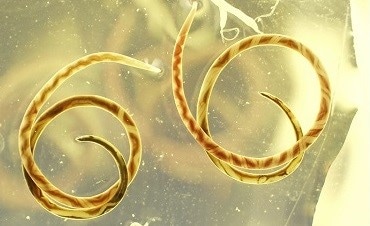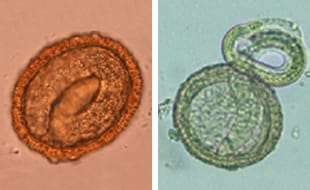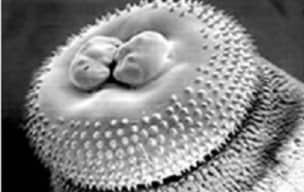Parasitic Meningitis
Various parasites can cause meningitis or can affect the brain or nervous system in other ways. Overall, parasitic meningitis is much less common than viral and bacterial meningitis.
Causes
Some parasites can cause a rare form of meningitis called eosinophilic meningitis, eosinophilic meningoencephalitis, or EM.
The three main parasites that cause EM in some infected people are:
- Angiostrongylus cantonensis (neurologic angiostrongyliasis)
- Baylisascaris procyonis (baylisascariasis; neural larva migrans)
- Gnathostoma spinigerum (neurognathostomiasis)
How These Parasites Spread
These parasites normally infect animals not people. People get infected primarily by eating infected animals or contaminated foods. Please visit CDC’s websites for additional details about how these parasites spread, besides the examples listed here:
- A. cantonensis: People can get infected by eating raw or undercooked snails or slugs or contaminated produce.
- B. procyonis: People get infected by accidentally ingesting infectious parasite eggs. These eggs can be found in raccoon feces and environments (such as dirt) contaminated with raccoon feces.
- G. spinigerum: People can get infected by eating raw or undercooked freshwater fish or eels, frogs, poultry, or snakes.
Generally, people also do not spread parasitic meningitis or the parasites that cause it to other people.
People at Risk
Some people may have increased risk for infection because of where they live or travel:
- People in many parts of the world have gotten infected with A. cantonensis. Most of these infections were diagnosed in Southeast Asia and the Pacific Islands, including in Hawaii.
- B. procyonis infects raccoons throughout the United States, mainly in the Midwest, Northeast, Middle Atlantic, and West Coast. People in these areas who spend time around raccoons are at increased risk for Baylisascaris infection. In addition, young children are at risk as they may be more likely to put contaminated fingers, soil, or objects in their mouths.
- The neurologic form of G. spinigerum infection is most commonly diagnosed in Southeast Asia, particularly in Thailand, and Japan.
Signs and Symptoms
If you think that you or your child might have meningitis, see a healthcare provider right away.
As with meningitis caused by other infections, people who develop symptomatic EM from these parasites can have
- Headache
- Stiff neck
- Nausea
- Vomiting
- Photophobia (eyes being more sensitive to light)
- Altered mental status (confusion)
People with EM caused by A. cantonensis often have tingling or painful feelings in their skin and may have a low-grade fever.
All three of these parasites sometimes infect the eye(s). All three parasites, but most commonly Baylisascaris, can cause severe complications, such as
- Loss of coordination and muscle control
- Weakness/paralysis
- Coma
- Permanent disability
- Death
Diagnosis
If a doctor suspects meningitis, he or she may collect samples of blood or cerebrospinal fluid. The laboratory looks for evidence of parasitic infection and to rule out other causes. It often is hard to find these parasites in the cerebrospinal fluid or in other parts of the body. In addition to laboratory testing, the following may be helpful for making a diagnosis:
- Travel or exposure history
- Clinical examination
- Other medical tests, such as brain scans
Treatment
There is no specific treatment for EM caused by these parasites. Pain medication may be used for headaches. Medications may also be used to reduce the body’s reaction to the parasite—rather than for the infection itself. However, treatment for the infection might help some people.
Prevention
Please visit CDC’s websites listed below to learn how to prevent infection with these and other parasites.


